Résultats de recherche de titre
Articles 1495901 à 1495920 sur 1497201
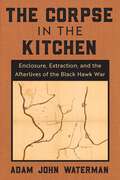
The Corpse in the Kitchen: Enclosure, Extraction, and the Afterlives of the Black Hawk War
Par Adam John Waterman. 2022
Reassessing the archive of the Black Hawk War, The Corpse in the Kitchen explores relationships between the enclosure of Indigenous…
land, histories of resource extraction, and the literary culture of settler colonialism. While conventional histories of the Black Hawk War have long treated the conflict as gratuitous, Adam John Waterman argues that the war part of a struggle over the dispensation of mineral resources specifically, mineral lead—and the emergence of new cultures of killing and composition. The elemental basis for the fabrication of bullets, lead drawn from the mines of the upper Mississippi, contributed to the dispossession of Indigenous peoples through the consolidation of U.S. control over a vital military resource. Rendered as metallic type, Mississippian lead contributed to the expansion of print culture, providing the occasion for literary justifications of settler violence, and promulgating the fiction of Indigenous disappearance.Treating the theft and excarnation of Black Hawk’s corpse as coextensive with processes of mineral extraction, Waterman explores ecologies of racial capitalism as forms of inscription, documentary traces written into the land. Reading the terrestrial in relation to more conventional literary forms, he explores the settler fetishization of Black Hawk’s body, drawing out homoerotic longings that suffuse representations of the man and his comrades. Moving from print to agriculture as modes of inscription, Waterman looks to the role of commodity agriculture in composing a history of settler rapine, including literal and metaphoric legacies of anthropophagy. Traversing mouth and stomach, he concludes by contrasting forms of settler medicine with Black Hawk’s account of medicine as an embodied practice, understood in relation to accounts of dreaming and mourning, processes that are unforgivably slow and that allow time for the imagination of other futures, other ways of being.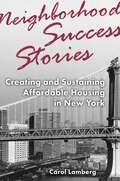
Neighborhood Success Stories: Creating and Sustaining Affordable Housing in New York
Par Carol Lamberg. 2018
The high cost of building affordable housing in New York, and cities like it, has long been a topic of…
urgent debate. Yet despite its paramount importance and the endless work of public and private groups to find ways to provide it, affordable housing continues to be an elusive commodity in New York City—and increasingly so in our current economic and political climate. In a timely, captivating memoir, Carol Lamberg weighs in on this vital issue with the lessons she learned and the successes she won while working with the Settlement Housing Fund, where she was executive director from 1983 until 2014. Lamberg provides a unique perspective on the great changes that have swept the housing arena since the curtailment of the welfare state in the 1970s, and spells out what is needed to address today’s housing problems. In a tradition of “big city” social work memoirs stretching back to Jane Addams, Lamberg reflects on the social purpose, vision, and practical challenges of the projects she’s been involved in, while vividly capturing the life and times of those who engaged in the creation and maintenance of housing and those who have benefited from it. Using a wealth of interviews with managers and residents alike, alongside the author’s firsthand experiences, this book depicts examples of successful community development between 1975 and 1997 in the Bronx and on the Lower East Side of Manhattan. In the “West Bronx Story,” Lamberg details the painful but ultimately exhilarating development of eighteen buildings that comprise New Settlement Apartments—a dramatic transformation of a devastated neighborhood into a thriving community. In “A Tale of Two Bridges,” the author depicts a different path to success, along with its particular challenges. The redevelopment of this area on the Lower East Side involved six different Federal housing programs and consisted of six residential sites, a running track, and a large scale supermarket. To this day, forty years later, all the buildings remain strong. With Neighborhood Success Stories, Lamberg offers a roadmap to making affordable housing a reality with the key ingredients of dogged persistence, group efforts, and creative coalition building. Her powerful memoir provides hope and practical encouragement in times that are more challenging than ever.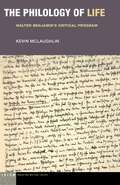
The Philology of Life: Walter Benjamin's Critical Program (Idiom: Inventing Writing Theory)
Par Kevin McLaughlin. 2023
The Philology of Life retraces the outlines of the philological project developed by Walter Benjamin in his early essays on…
Hölderlin, the Romantics, and Goethe. This philological program, McLaughlin shows, provides the methodological key to Benjamin’s work as a whole. According to Benjamin, German literary history in the period roughly following the first World War was part of a wider “crisis of historical experience”—a life crisis to which Lebensphilosophie (philosophy of life) had instructively but insufficiently responded. Benjamin’s literary critical struggle during these years consisted in developing a philology of literary historical experience and of life that is rooted in an encounter with a written image.The fundamental importance of this “philological” method in Benjamin’s work seems not to have been recognized by his contemporary readers, including Theodor Adorno who considered the approach to be lacking in dialectical rigor. This facet of Benjamin’s work was also elided in the postwar publications of his writings, both in German and English. In recent decades, the publication of a wider range of Benjamin’s writings has made it possible to retrace the outlines of a distinctive philological project that starts to develop in his early literary criticism and that extends into the late studies of Baudelaire and Paris. By bringing this innovative method to light this study proposes “the philology of life” as the key to the critical program of one of the most influential intellectual figures in the humanities.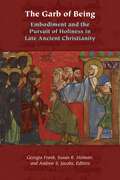
The Garb of Being: Embodiment and the Pursuit of Holiness in Late Ancient Christianity (Orthodox Christianity and Contemporary Thought)
Par Georgia Frank, Susan R. Holman, and Andrew S. Jacobs. 2020
This collection explores how the body became a touchstone for late antique religious practice and imagination. When we read the…
stories and testimonies of late ancient Christians, what different types of bodies stand before us? How do we understand the range of bodily experiences—solitary and social, private and public—that clothed ancient Christians? How can bodily experience help us explore matters of gender, religious identity, class, and ethnicity? The Garb of Being investigates these questions through stories from the Eastern Christian world of antiquity: monks and martyrs, families and congregations, and textual bodies.Contributors include S. Abrams Rebillard, T. Arentzen, S. P. Brock, R. S. Falcasantos , C. M. Furey, S. H. Griffith, R. Krawiec, B. McNary-Zak, J.-N. Mellon Saint-Laurent, C. T. Schroeder, A. P. Urbano, F. M. Young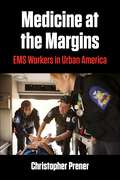
Medicine at the Margins: EMS Workers in Urban America (Polis: Fordham Series in Urban Studies)
Par Christopher Prener. 2022
Presents a unique view of social problems and conflicts over urban space from the cab of an ambulance.While we imagine…
ambulances as a site for critical care, the reality is far more complicated. Social problems, like homelessness, substance abuse, and the health consequences of poverty, are encountered every day by Emergency Medical Services (EMS) workers. Written from the lens of a sociologist who speaks with the fluency of a former Emergency Medical Technician (EMT), Medicine at the Margins delves deeply into the world of EMTs and paramedics in American cities, an understudied element of our health care system.Like the public hospital, the EMS system is a key but misunderstood part of our system of last resort. Medicine at the Margins presents a unique prism through which urban social problems, the health care system, and the struggling social safety net refract and intersect in largely unseen ways. Author Christopher Prener examines the forms of marginality that capture the reality of urban EMS work and showcases the unique view EMS providers have of American urban life. The rise of neighborhood stigma and the consequences it holds for patients who are assumed by providers to be malingering is critical for understanding not just the phenomenon of non- or sub-acute patient calls but also why they matter for all patients. This sense of marginality is a defining feature of the experience of EMS work and is a statement about the patient population whom urban EMS providers care for daily. Prener argues that the pre-hospital health care system needs to embrace its role in the social safety net and how EMSs’ future is in community practice of paramedicine, a port of a broader mandate of pre-hospital health care. By leaning into this work, EMS providers are uniquely positioned to deliver on the promise of community medicine.At a time when we are considering how to rely less on policing, the EMS system is already tasked with treating many of the social problems we think would benefit from less involvement with law involvement. Medicine at the Margins underscores why the EMS system is so necessary and the ways in which it can be expanded.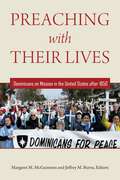
Preaching with Their Lives: Dominicans on Mission in the United States after 1850
Par Margaret M. McGuinness and Jeffrey M. Burns. 2021
This volume tells the little-known story of the Dominican Family—priests, sisters, brothers, contemplative nuns, and lay people—and integrates it into…
the history of the United States. Starting after the Civil War, the book takes a thematic approach through twelve essays examining Dominican contributions to the making of the modern United States by exploring parish ministry, preaching, health care, education, social and economic justice, liturgical renewal and the arts, missionary outreach and contemplative prayer, ongoing internal formation and renewal, and models of sanctity. It charts the effects of the United States on Dominican life as well as the Dominican contribution to the larger U.S. history. When the country was engulfed by wave after wave of immigrants and cities experienced unchecked growth, Dominicans provided educational institutions; community, social, and religious centers; and health care and social services. When epidemic disease hit various locales, Dominicans responded with nursing care and spiritual sustenance. As the United States became more complex and social inequities appeared, Dominicans cried out for social and economic justice. Amidst the ugliness and social dislocation of modern society, Dominicans offered beauty through the liturgical arts, the fine arts, music, drama, and film, all designed to enrich the culture. Through it all, the Dominicans cultivated their own identity as well, undergoing regular self-examination and renewal.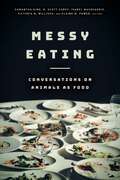
Messy Eating: Conversations on Animals as Food
Par Samantha King, R. Scott Carey, Isabel Macquarrie, Elaine M. Power, Victoria N. Millious. 2019
Literature on the ethics and politics of food and that on human–animal relationships have infrequently converged. Representing an initial step…
toward bridging this divide, Messy Eating features interviews with thirteen prominent and emerging scholars about the connections between their academic work and their approach to consuming animals as food. The collection explores how authors working across a range of perspectives—postcolonial, Indigenous, black, queer, trans, feminist, disability, poststructuralist, posthumanist, and multispecies—weave their theoretical and political orientations with daily, intimate, and visceral practices of food consumption, preparation, and ingestion. Each chapter introduces a scholar for whom the tangled, contradictory character of human–animal relations raises difficult questions about what they eat. Representing a departure from canonical animal rights literature, most authors featured in the collection do not make their food politics or identities explicit in their published work. While some interviewees practice vegetarianism or veganism, and almost all decry the role of industrialized animal agriculture in the environmental crisis, the contributors tend to reject a priori ethical codes and politics grounded in purity, surety, or simplicity. Remarkably free of proscriptions, but attentive to the Eurocentric tendencies of posthumanist animal studies, Messy Eating reveals how dietary habits are unpredictable and dynamic, shaped but not determined by life histories, educational trajectories, disciplinary homes, activist experiences, and intimate relationships. These accessible and engaging conversations offer rare and often surprising insights into pressing social issues through a focus on the mundane—and messy— interactions that constitute the professional, the political, and the personal. Contributors: Neel Ahuja, Billy-Ray Belcourt, Matthew Calarco, Lauren Corman, Naisargi Dave, Maneesha Deckha, María Elena García, Sharon Holland, Kelly Struthers Montford, H. Peter Steeves, Kim TallBear, Sunaura Taylor, Harlan Weaver, Kari Weil, Cary Wolfe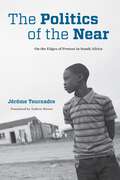
The Politics of the Near: On the Edges of Protest in South Africa (Thinking from Elsewhere)
Par Jérôme Tournadre. 2022
The Politics of the Near offers a novel approach to social unrest in post-apartheid South Africa. Keeping the noise of…
demonstrations, barricades, and clashes with the police at a distance, this ethnography of a poor people’s movement traces individual commitments and the mainsprings of mobilization in the ordinary social and intimate life of activists, their relatives, and other township residents.Tournadre’s approach picks up on aspects of activists lives that are often neglected in the study of social movements that help us better understand the dynamics of protest and the attachment of activists to their organization and its cause. What Tournadre calls a “politics of the near” takes shape, through sometimes innocuous actions and beyond the separation between public and domestic spheres.By mapping the daily life of Black and low-income neighborhoods and the intimate domain where expectations and disappointments surface, The Politics of the Near offers a different perspective on the “rainbow nation”—a perspective more sensitive to the fact that, three decades after the end of apartheid, poverty and race are still as tightly interwoven as ever.
This volume examines the historical connections between the United States’ Reconstruction and the country’s emergence as a geopolitical power a…
few decades later. It shows how the processes at work during the postbellum decade variously foreshadowed, inhibited, and conditioned the development of the United States as an overseas empire and regional hegemon. In doing so, it links the diverse topics of abolition, diplomacy, Jim Crow, humanitarianism, and imperialism.In 1935, the great African American intellectual W. E. B. Du Bois argued in his Black Reconstruction in America that these two historical moments were intimately related. In particular, Du Bois averred that the nation’s betrayal of the South’s fledgling interracial democracy in the 1870s put reactionaries in charge of a country on the verge of global power, with world-historical implications. Working with the same chronological and geographical parameters, the contributors here take up targeted case studies, tracing the biographical, ideological, and thematic linkages that stretch across the postbellum and imperial moments. With an Introduction, eleven chapters, and an Afterword, this volume offers multiple perspectives based on original primary source research. The resulting composite picture points to a host of countervailing continuities and changes. The contributors examine topics as diverse as diplomatic relations with Spain, the changing views of radical abolitionists, African American missionaries in the Caribbean, and the ambiguities of turn-of-the century political cartoons.Collectively, the volume unsettles familiar assumptions about how we should understand the late nineteenth-century United States, conventionally framed as the Gilded Age and Progressive Era. It also advances transnational approaches to understanding America’s Reconstruction and the search for the ideological currents shaping American power abroad.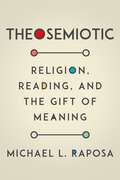
Theosemiotic: Religion, Reading, and the Gift of Meaning
Par Michael L. Raposa. 2020
In Theosemiotic, Michael Raposa uses Charles Peirce’s semiotic theory to rethink certain issues in contemporary philosophical theology and the philosophy…
of religion. He first sketches a history that links Peirce’s thought to that of earlier figures (both within the tradition of American religious thought and beyond), as well as to other classical pragmatists and to later thinkers and developments. Drawing on Peirce’s ideas, Raposa develops a semiotic conception of persons/selves emphasizing the role that acts of attention play in shaping human inferences and perception. His central Peircean presuppositions are that all human experience takes the form of semiosis and that the universe is “perfused” with signs. Religious meaning emerges out of a process of continually reading and re-reading certain signs.Theology is explored here in its manifestations as inquiry, therapy, and praxis. By drawing on both Peirce’s logic of vagueness and his logic of relations, Raposa makes sense out of how we talk about God as personal, and also how we understand the character of genuine communities. An investigation of what Peirce meant by “musement” illuminates the nature and purpose of prayer. Theosemiotic is portrayed as a form of religious naturalism, broadly conceived. At the same time, the potential links between any philosophical theology conceived as theosemiotic and liberation theology are exposed.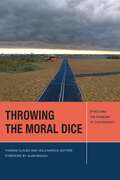
Throwing the Moral Dice: Ethics and the Problem of Contingency (Just Ideas)
Par Thomas Claviez and Viola Marchi. 2022
More than a purely philosophical problem, straddling the ambivalent terrain between necessity and impossibility, contingency has become the very horizon…
of everyday life. Often used as a synonym for the precariousness of working conditions under neoliberalism, for the unknown threats posed by terrorism, or for the uncertain future of the planet itself, contingency needs to be calculated and controlled in the name of the protection of life. The overcoming of contingency is not only called upon to justify questionable mechanisms of political control; it serves as a central legitimating factor for Enlightenment itself. In this volume, nine major philosophers and theorists address a range of questions around contingency and moral philosophy. How can we rethink contingency in its creative aspects, outside the dominant rhetoric of risk and dangerous exposure? What is the status of contingency—as the unnecessary and law-defying—in or for ethics? What would an alternative “ethics of contingency”—one that does not simply attempt to sublate it out of existence—look like?The volume tackles the problem contingency has always posed to both ethical theory and dialectics: that of difference itself, in the difficult mediation between the particular and the universal, same and other, the contingent singularity of the event and the necessary generality of the norms and laws.From deconstruction to feminism to ecological thought, some of today’s most influential thinkers reshape many of the most debated concepts in moral philosophy: difference, agency, community, and life itself.Contributors: Étienne Balibar, Rosi Braidotti, Thomas Claviez, Drucilla Cornell, Hans Ulrich Gumbrecht, Viola Marchi, Michael Naas, Cary Wolfe, Slavoj Žižek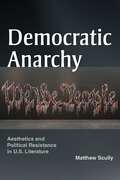
Democratic Anarchy: Aesthetics and Political Resistance in U.S. Literature
Par Matthew Scully. 2024
A dramatic and necessary rethinking of the meaning of DemocracyDemocratic Anarchy grapples with an uncomfortable but obvious truth inimical to…
democracy: both aesthetics and politics depend on the structuring antagonism of inclusion and exclusion. Yet in Democratic Anarchy, Matthew Scully asks, how can “the people” be represented in a way that acknowledges what remains unrepresentable? What would it mean to face up to the constitutive exclusions that haunt U.S. democracy and its anxious fantasies of equality?Synthesizing a broad range of theoretical traditions and interlocutors—including Lacan, Rancière, Edelman, and Hartman—Democratic Anarchy polemically declares that there has never been, nor can there ever be, a realized democracy in the U.S. because democracy always depends on the hierarchical institution of a formal order by one part of the population over another. Engaging with an expansive corpus of American literature and art (Harriet Jacobs, Nathaniel Hawthorne, Louis Zukofsky, Thomas Pynchon, Toni Morrison, Theresa Hak Kyung Cha, Nari Ward, Ocean Vuong, and Safiya Sinclair), Democratic Anarchy argues that many liberal concepts and institutions are in fact structurally opposed to democratic equality because they depend on regulating what can appear and in what form.By focusing on works that disrupt this regulatory impulse, Scully shows how rhetorical strategies of interruption, excess, and disorder figure the anarchic equality that inegalitarian fantasies of democracy disavow. Democratic Anarchy develops a rigorous theory of equality that refuses to repeat the inequalities against which it positions itself, and it does so by turning to moments of resistance—both aesthetic and political—inaugurated by the equality that inheres in and antagonizes the order of things.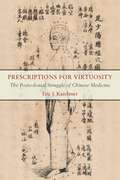
Prescriptions for Virtuosity: The Postcolonial Struggle of Chinese Medicine
Par Eric I. Karchmer. 2022
Although Chinese medicine is assumed to be a timeless healing tradition, the encounter with modern biomedicine threatened its very existence…
and led to many radical changes. Prescriptions for Virtuosity tells the story of how doctors of Chinese medicine have responded to the global dominance of biomedicine and developed new forms of virtuosity to keep their clinical practice relevant in contemporary Chinese society.Based on extensive ethnographic and historical research, the book documents the strategies of Chinese medicine doctors to navigate postcolonial power inequalities. Doctors have followed two seemingly contradictory courses of action. First, they have emphasized the unique “Chinese” characteristics of their practice, defining them against the perceived strengths of biomedicine, and producing an ontological divide between the two medical systems. These oppositions have inadvertently marginalized Chinese medicine, making it seem appropriate for clinical use only when biomedical solutions are lacking. Second, doctors have found points of convergence to facilitate the blending of the two medical practices, producing innovative solutions to difficult clinical problems.Prescriptions for Virtuosity examines how the postcolonial condition can generate not only domination but hybridity. Karchmer shows, for example, how the clinical methodology of “pattern discrimination and treatment determination” bianzheng lunzhi, which is today celebrated as the quintessential characteristic of Chinese medicine, is a twentieth-century invention. When subjected to the institutional standardizations of hospital practice, bianzheng lunzhi can lead to an impoverished form of medicine. But in the hands of a virtuoso physicians, it becomes a dynamic tool for moving between biomedicine and Chinese medicine to create innovative new therapies.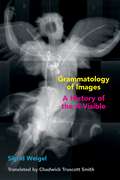
Grammatology of Images: A History of the A-Visible (Commonalities)
Par Sigrid Weigel. 2015
Grammatology of Images radically alters how we approach images. Instead of asking for the history, power, or essence of images,…
Sigrid Weigel addresses imaging as such. The book considers how something a-visible gets transformed into an image. Weigel scrutinizes the moment of mis-en-apparition, of making an appearance, and the process of concealment that accompanies any imaging.Weigel reinterprets Derrida’s and Freud’s concept of the trace as that which must be thought before something exists. In doing so, she illuminates the threshold between traces and iconic images, between something immaterial and its pictorial representation. Chapters alternate between general accounts of the line, the index, the effigy, and the cult-image, and case studies from the history of science, art, politics, and religion, involving faces as indicators of emotion, caricatures as effigies of defamation, and angels as embodiments of transcendental ideas.Weigel’s approach to images illuminates fascinating, unexpected correspondences between premodern and contemporary image-practices, between the history of religion and the modern sciences, and between things that are and are not understood as art.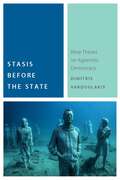
Stasis Before the State: Nine Theses on Agonistic Democracy (Commonalities)
Par Dimitris Vardoulakis. 2018
This book critiques the relation between sovereignty and democracy. Across nine theses, Vardoulakis argues that sovereignty asserts its power by…
establishing exclusions: the sovereign excluding other citizens from power and excludes refugees and immigrants from citizenship. Within this structure, to resist sovereignty is to reproduce the logic of exclusion characteristic of sovereignty.In contrast to this “ruse of sovereignty,” Vardoulakis proposes an alternative model for political change. He argues that democracy can be understood as the structure of power that does not rely on exclusions and whose relation to sovereignty is marked not by exclusion but of incessant agonism.The term stasis, which refers both to the state and to revolution against it, offers a tension that helps to show how the democratic imperative is presupposed by the logic of sovereignty, and how agonism is more primary than exclusion. In elaborating this ancient but only recently recovered concept of stasis, Vardoulakis illustrates the radical potential of democracy to move beyond the logic of exclusion and the ruse of sovereignty.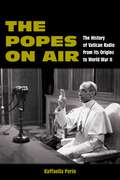
The story of the origin of Vatican Radio provides a unique look at the history of World War IIThe book…
offers the first wide-ranging study on the history of Vatican Radio from its origins (1931) to the end of Pius XII’s pontificate (1958) based on unpublished sources. The opening of the Secret Vatican Archives on the records regarding Pius XII will shed light on the most controversial pontificate of the 20th century. Moreover, the recent rearrangement of the Vatican media provided the creation of a multimedia archive that is still in Fieri.This research is an original point of view on the most relevant questions concerning these decades: the relation of the Catholic Church with the Fascist regimes and Western democracies; the attitude toward anti-Semitism and the Shoah in Europe, and in general toward the total war; the relationship of the Holy See with the new media in the mass society; the questions arisen in the after-war period such as the Christian Democratic Party in Italy; the new role of women; and anti-communism and the competition for the consensus in the social and moral order in a secularized society.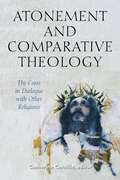
The central Christian belief in salvation through the suffering, death, and resurrection of Jesus Christ remains one of the most…
intractable mysteries of Christian faith. Throughout history, it has given rise to various theories of atonement, many of which have been subject to critique as they no longer speak to contemporary notions of evil and sin or to current conceptions of justice. One of the important challenges for contemporary Christian theology thus involves exploring new ways of understanding the salvific meaning of the cross.In Atonement and Comparative Theology, Christian theologians with expertise in Judaism, Islam, Hinduism, Buddhism, Daoism, and African Religions reflect on how engagement with these traditions sheds new light on the Christian understanding of atonement by pointing to analogous structures of sin and salvation, drawing attention to the scandal of the cross as seen by the religious other, and re-interpreting aspects of the Christian understanding of atonement. Together, they illustrate the possibilities for comparative theology to deepen and enrich Christian theological reflection.
Sodomscapes: Hospitality in the Flesh
Par Lowell Gallagher. 2017
Sodomscapes presents a fresh approach to the story of Lot’s wife, as it’s been read across cultures and generations. In…
the process, it reinterprets foundational concepts of ethics, representation, and the body. While the sudden mutation of Lot’s wife in the flight from Sodom is often read to confirm our antiscopic bias, a rival tradition emphasizes the counterintuitive optics required to nurture sustainable habitations for life in view of its unforeseeable contingency.Whether in medieval exegesis, Russian avant-garde art, Renaissance painting, or today’s Dead Sea health care tourism industry, the repeated desire to reclaim Lot’s wife turns the cautionary emblem of the mutating woman into a figural laboratory for testing the ethical bounds of hospitality. Sodomscape—the book’s name for this gesture—revisits touchstone moments in the history of figural thinking and places them in conversation with key thinkers of hospitality. The book’s cumulative perspective identifies Lot’s wife as the resilient figure of vigilant dwelling, whose in-betweenness discloses counterintuitive ways of understanding what counts as a life amid divergent claims of being-with and being-for.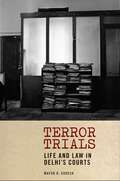
Terror Trials: Life and Law in Delhi's Courts (Thinking from Elsewhere)
Par Mayur R. Suresh. 2023
Honorable Mention, Bernard S. Cohn Book PrizeAn ethnography of terrorism trials in Delhi, India, this book explores what modes of…
life are made possible in the everyday experience of the courtroom. Mayur Suresh shows how legal procedures and technicalities become the modes through which courtrooms are made habitable. Where India’s terror trials have come to be understood by way of the expansion of the security state and displays of Hindu nationalism, Suresh elaborates how they are experienced by defendants in a quite different way, through a minute engagement with legal technicalities.Amidst the grinding terror trials—which are replete with stories of torture, illegal detention and fabricated charges—defendants school themselves in legal procedures, became adept petition writers, build friendships with police officials, cultivate cautious faith in the courts and express a deep sense of betrayal when this trust is belied. Though seemingly mundane, legal technicalities are fraught and highly contested, and acquire urgent ethical qualities in the life of a trial: the file becomes a space in which the world can be made or unmade, the petition a way of imagining a future, and investigative and courtroom procedures enable the unexpected formation of close relationships between police and terror-accused.In attending to the ways in which legal technicalities are made to work in everyday interactions among lawyers, judges, accused terrorists, and police, Suresh shows how human expressiveness, creativity and vulnerability emerge through the law.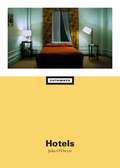
Hotels (Cutaways)
Par Jules O'Dwyer. 2025
From Marienbad to the Bates Motel, cinematic hotels are more than a mere backdrop to a film’s action. They actively…
scaffold the formal, aesthetic, and narrative possibilities of cinema. This book takes a journey through spaces of temporary dwelling—hotels, inns, and motels—to delve into the dynamics and contradictions that structure modern life.Along the way, O’Dwyer considers questions of plot and eroticism, labor and globalization, and the ethics and economics of hospitality. Drawing on a broad array of films from European art cinema to experimental adult media, and placing cinema into dialogue with film theory and media history, Hotels explores both how and why the hotel has such a strong purchase on the cinematic imaginary.